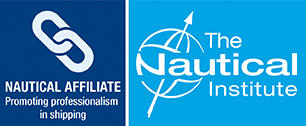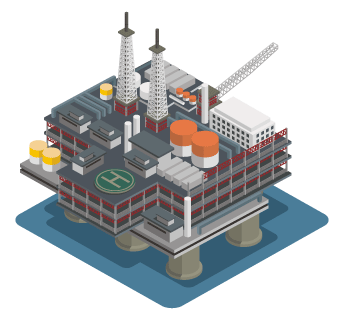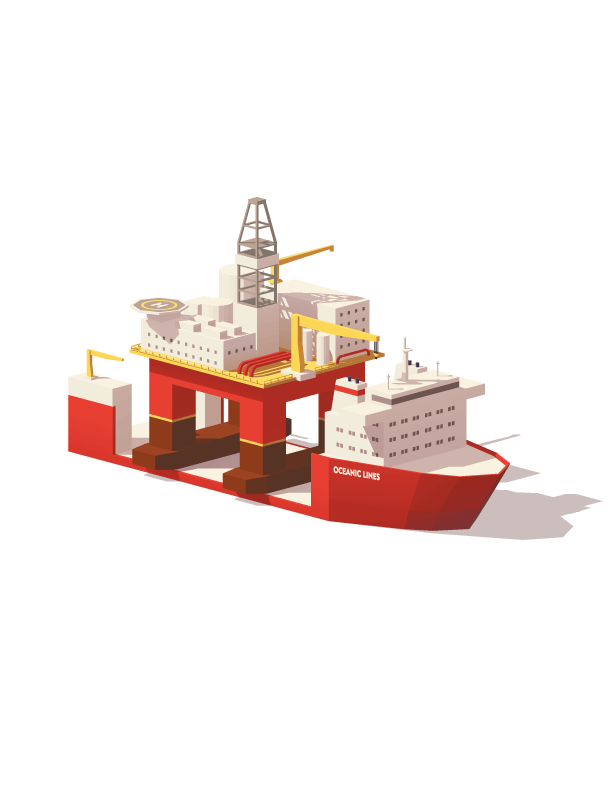IMAT DP

The offshore sector is currently one of the most evolving sector in maritime industry. The higher demand for fuel resources and constant desire to know more made humans look further and deeper reaching for the underwater deposits of oil and gas by the use of the latest technologies.
The Dynamic Positioning System enabled the ships to operate in every wind or sea conditions, remaining stopped in their position without the use of anchors. We are the only accredited in Italy (about 95 in the world) to make courses for ships involved in operations using Dynamic Positioning Systems.

A large number of marine contracting operations require the use of dynamic positioning (DP)
– the use of systems which automatically control a vessel’s position and heading exclusively by means of active thrust to remain at a fixed location, for precision
manoeuvring, tracking and for other specialist positioning abilities.
DP Induction
Understand the relationship between vessel movement, sensors, computers propulsion units and feedback
DP Revalidation
The course is intended for those who have already been issued a DPO Certificate from the NI but are unable to revalidate their DPO Certificate if they have not gained sufficient DP sea time.
DP Familiarization (Awareness) Course (IMCA Guidelines)
Training Courses for Other Personnel Involved in DP Operations Course content in line with the latest IMCA Guidelines
DP Maintenance
The purpose of this course is to provide Dynamic Positioning Technical training to fulfill the requirements of the industry and of the various legal bodies and institutions involved.
DP Simulator
Participation in simulated scenarios in a variety of DP operations while handling routine and emergency situations
DP Awareness (Non-Stcw Candidates):
The course is intended for those who do not fit into the STCW regulation, such as Ballast Control Operator, Barge Supervisor, Shore-based personnel, Technical inspectors… etc.
DP Refresher
Refresher training is a fundamental requirement for all DP personnel, course time will be planned on case by case according the Certificate of qualification.
Become an expert
Accept the challenge, try our simulators.
DPO is a person who in charge of control with Dynamic Positioning System. As you know this is very complex task because DP System need to combine position reference sensors, wind sensors, motion sensors to calculate the impact of environmental forces that affect to vessels position.
Learning DP
Exploration, Exploitation and Production
“Offshore”, when used in relation to hydrocarbons, refers to operations undertaken at, or under the, sea in association with an oil, natural gas or condensate field that is under the seabed, or to activities carried out in relation to such a field. Offshore is part of the upstream sector of the oil and gas industry.
Offshore activities include searching for potential underground crude oil and natural gas reservoirs and accumulations, the drilling of exploratory wells, and subsequently drilling and operating the wells that recover and bring the crude oil and/or natural gas to the surface.
Offshore exploration is performed with a variety of DP ships, floating drilling units, drillships, semi-submersible installations and jack-up installations.
DP systems have become more sophisticated and complicated, as well as more reliable.
Computer technology has developed rapidly and some vessels have been upgraded twice
with new DP control systems. Position reference systems and other peripherals are also improving and redundancy is provided on all vessels designed to conduct higher-risk operations.
Offshore Facilities
At the surface (either on the seabed or above water) offshore facilities are designed, constructed, commissioned and operated to process and treat the hydrocarbon oil and gas. Permanent oil and gas installations and plant include subsea wellheads and flowlines, offshore platforms and tethered floating installations. Other facilities include storage vessels, tanker ships, and pipelines to transport hydrocarbons onshore for further treatment and distribution.
There are various types of installation used in the development of offshore oil and gas fields and subsea facilities, these include: fixed platforms, compliant towers, semi-submersible platforms, jack-up installations, floating production systems, tension-leg platforms, gravity-based structure and spar platforms.
DP Brief History
Dynamic positioning (DP) is a rapidly maturing technology, having been born of necessity as a result of the increasing demands of the rapidly expanding oil and gas exploration industry in the 1960s and early 1970s.
The demands of the offshore oil and gas industry have brought about a whole new set of requirements. Further to this, the more recent moves into deeper waters and harsh environment locations, together with the requirement to consider more environmental-friendly methods has brought about great development in the area of Dynamic Positioning techniques and technology.
The first vessel to fulfil the accepted definition of DP was the “Eureka”, of 1961, designed and engineered by Howard Shatto. This vessel was fitted with an analogue control system of very basic type, interfaced with a taut wire reference. Equipped with steerable thrusters fore and aft in addition to her main propulsion, this vessel was of about 450 tons displacement and length 130 feet.
It is interesting to note the diversity of vessel types and functions using DP, and the way that, during the
past twenty years, this has encompassed many functions unrelated to the offshore oil and
gas industries. Operation with Dp ship is not limited to only to oil and gas industry but other conventional marine operations have found benefit in using DP system, example: Passenger ships, yacht, tankers,naval ship, Heavy-Lift Vessels, Crane Barge or Crane Vessel, ice breakers…..etc etc
List of Activities
A list of activities executed by DP vessels would include the following:
- exploration drilling (core sampling)
- production drilling
- diver support
- pipelay (rigid and flexible pipe)
- cable lay and repair
- multi-role
- accommodation or “flotel” services
- hydrographic survey
- pre- or post-operational survey
- wreck survey, salvage and removal
- dredging
- rockdumping (pipeline protection)
- subsea installation
- lifting (topsides and subsea)
- well stimulation and workover
- platform supply
- shuttle tanker offtake
Floating production (with or without storage)
- heavy lift cargo transport
- passenger cruises
- mine countermeasures
- oceanographical research/coring
- seabed mining
DP is also used in
- rocket launch platform positioning
- repair/maintenance support to military vessels
- ship-to-ship transfer and
- manoeuvring conventional vessels
DP Advantages
- Vessel is fully self-propelled; no tugs are required at any stage of the operation
- Setting-up on location is quick and easy
- Vessel is very manoeuvrable
- Rapid response to weather changes is possible (weather vane)
- Rapid response to changes in the requirements of the operation
- Versatility within system (i.e. track-follow, ROV-follow and other specialist
functions)
- Ability to work in any water depth
- Can complete short tasks more quickly, thus more economically
- Avoidance of risk of damaging seabed hardware from mooring lines and anchors
- Avoidance of cross-mooring with other vessels or fixed platforms
- Can move to new location rapidly (also avoid bad weather)
DP Disadvantages
- High capex
- Can fail to keep position due to equipment failure
- Higher day rates than comparable moored systems
- Higher fuel consumption
- Thrusters are hazards for divers and ROVs
- Can lose the position in extreme weather or in shallow waters and strong tides
- Position control is active and relies on the human operator (as well as equipment)
- Requires more personnel to operate and maintain equipment


DPO at IMAT
Who is Dynamic Positioning Operator (DPO)?
DPO is a person who in charge of control with Dynamic Positioning System. The purpose of this System is automatically maintain a vessel’s position and heading by using its own propellers and thrusters. As you know this is very complex task because DP System need to combine position reference sensors, wind sensors, motion sensors to calculate the impact of environmental forces that affect to vessels position.
The DP “CERTIFICATE” will be issued after the successful completion of all phases of the training scheme. This certificate confirms the competence of an operator and allows him to work on DP Systems without supervision.
Nautical Institute Membership
The Nautical Institute has been involved with DPO training and qualification from the beginning: its scheme for the training of DPOs is accepted worldwide. Shore-based training centres all over the world provide elements of training approved and accredited to a common high standard.
The “Italian maritime academy technologies” (IMAT) is an Accredited nautical institute dp operator training centre since 2006,we are the only accredited DP Centre in Italy (about 85 in the world) to make courses for ships involved in operations using Dynamic Positioning Systems.
Nautical Institute DP training scheme
Download Welcome Pack part 1
Find all the information about DP courses provided by IMAT
Download Welcome Pack part 2
Find all the information about IMAT facilities and how to reach us!
Download Welcome Pack part 2a
Find all the information about courses and services provided by IMAT
Ready to get started?
Get in touch, or send us an email.
